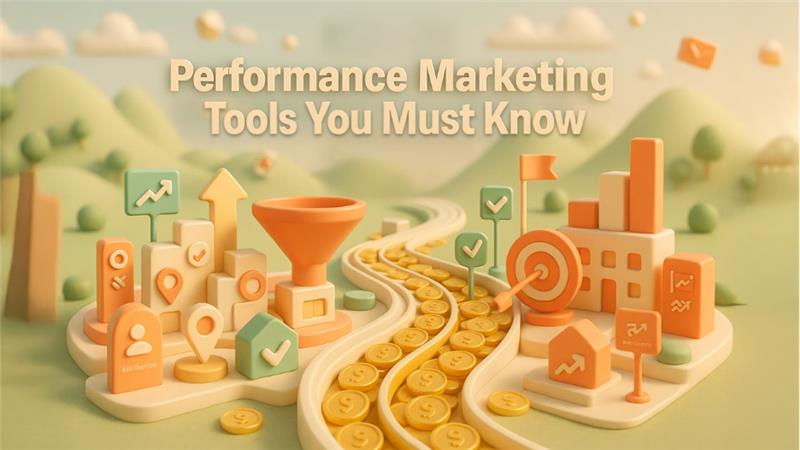In the fast-paced, cutthroat B2B world of today, marketers are shifting from wide, tracked campaigns to a more focused and personalized strategy. These campaigns are designed to meet the needs
In the fast-paced, cutthroat B2B world of today, marketers are shifting from wide, tracked campaigns to a more focused and personalized strategy. These campaigns are designed to meet the needs of potential clients. However, one such method that is gaining traction is Account-Based Marketing (ABM). It’s basically a strategy that brings marketing and sales teams together to target high-value accounts instead of reaching a wide audience.
This blog is all about ABM, explaining why it gains momentum and how businesses can leverage it efficiently to boost ROI, enhance client relationships, and reduce the sales cycle.
What do you understand about Account-Based Marketing (ABM)?
At its core, account-based marketing refers to a strategic method which facilitates both marketing and sales teams to work together. This is used to enhance the personlization in the marketing experience for a pre-made list of top-notch target client accounts. Rather than creating a list of potential clients and fostering them through a common sales funnel, ABM priorities are determining the ideal leads from scratch. Therefore, this approach allows them to design content and marketing strategies tailored to their unique business needs.
Essential Features of ABM:
Prioritise high-value, premium accounts
Customize content and messaging based on unique needs
Empower marketing and sales team to collaborate
Monitor performance by account interaction and revenue growth
Why Is ABM Gaining Momentum?
Shifting B2B Client Interest
B2B clients are up-to-date and more enlightened, as they perform thorough research before establishing communication with stockholders. However, AMB offers the same, including personalised content and well-planned marketing efforts, establishing a valuable connection before the buying process.
Enhanced ROI
Unlike alternative marketing practices, Account-based marketing provides improved ROI. Based on the ITSMA organization, approximately 87% of marketers highlight ABM surpassing other outreach investments in terms of ROI.
Improved Collaboration Between Sales and Marketing Teams
Typically, ABM fosters stronger teamwork between sales and marketing. This collaboration is prone to more frequent messaging, robust cooperation with leads, and a comprehensive picture of the sales pipeline.
More Effective Use of Resources
Instead of spreading resources across a wide range of low-quality prospects, ABM focuses time and budget on essential accounts, ultimately enhancing effectiveness and efficiency.
Key Steps to Implement an ABM Strategy
Recognize High-Value Accounts
To identify premium targeted clients, evaluate some criteria like revenue capacity, company size, industry, and the likelihood of making a purchase. Many tools help you out with this, like Bombora, firmographic, and LinkedIn sales navigator.
Create Account Smarter
Conduct deep research of each account to identify their challenges, objectives, main decision makers, and even business infrastructure. This approach can boost the efficiency of content and marketing practices.
Create Personalized Content and Campaigns
Develop personalised messaging and resources for each account (or cluster of similar accounts). This can include tailored landing pages, personalized emails, webinars, case studies, and even business card printing for in-person meetings and events—strengthening brand presence and professionalism.
Align Marketing and Sales
Establish shared KPIs, regular communication, and joint planning between marketing and sales teams. Use platforms like HubSpot, Demandbase, or Terminus to track engagement across digital channels.
Measure and Optimize
Monitor metrics such as account engagement, deal velocity, pipeline contribution, and closed revenue. Use these insights to consistently improve your strategy over time based on their activity.
Also Read
How to Create QR Code for Your Business: A Detailed Guide
Challenges of ABM and Potential Solutions to Overcome Them
Scalability: It is one of the common issues, as ABM is highly personalised and often resource intensive. To overcome this, start with executing a pilot program targeting a small segment of high-value accounts, then use tiered strategies to scale.
Data Silos: One of the other hurdles is that ABM operates when it has unified data across platforms. Ensure you are invest in tools that integrate CRM, marketing automation, and analytics platforms effectively.
Cross-Functional Buy-in: Educate leadership and cross-functional teams on the long-term benefits of ABM to gain support, budget, and resources required to make it successful.
Conclusion
As B2B marketing continues to evolve, precision and relevance are becoming essential to reach the right audience at the right time. Account-Based Marketing (ABM) offers a way to build deeper relationships with high-value prospects, drive more efficient growth, and align sales and marketing toward shared outcomes. Whether it's personalized emails or thoughtful business card printing for face-to-face engagement, the smallest details can leave a lasting impression.
Businesses that invest in ABM now are positioning themselves for robust customer relationships, shorter sales cycles, and long-term revenue growth. Succeeding with an ABM strategy is not happening overnight; it requires consistent planning, alignment, and adaptability. By leveraging the well-executable strategy and effective tools in place, businesses can significantly improve customer experience. Additionally, it also helps convert their potential clients into devoted, long-term customers, making them feel valuable and important
Respond to this article with emojis






